ランキング
-
 5600MHz帯トランスバーター 完成品 IF:1.2GHz帯 外部基準10MHz対応【受注生産】
120,000円(税込132,000円)
5600MHz帯トランスバーター 完成品 IF:1.2GHz帯 外部基準10MHz対応【受注生産】
120,000円(税込132,000円)
-
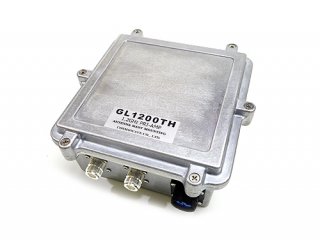 アンテナ直下型1200MHz帯プリアンプ BPF内蔵型 1.2GHz 屋外用 【受信アンプ】 【受注生産】
アンテナ直下型1200MHz帯プリアンプ BPF内蔵型 1.2GHz 屋外用 【受信アンプ】 【受注生産】 42,000円(税込46,200円)
42,000円(税込46,200円)
-
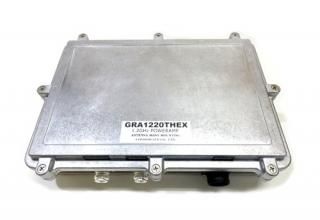 直下型1200MHz帯リニアアンプ 屋外型 【予約販売】【受注生産】
直下型1200MHz帯リニアアンプ 屋外型 【予約販売】【受注生産】 67,000円(税込73,700円)
67,000円(税込73,700円)
-
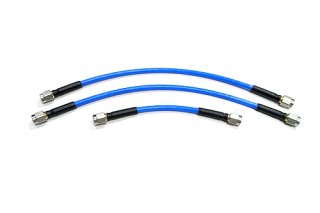 セミフレキ 同軸ケーブル SMAPコネクター付 10cm〜各種 屋外使用可 UT141 【受注生産】 IC-905に最適
セミフレキ 同軸ケーブル SMAPコネクター付 10cm〜各種 屋外使用可 UT141 【受注生産】 IC-905に最適 2,500円(税込2,750円)
2,500円(税込2,750円)
-
 5.6GHz帯 高ゲイン・ ホーンアンテナ 輻射器 5600MHz デュアルモード
5.6GHz帯 高ゲイン・ ホーンアンテナ 輻射器 5600MHz デュアルモード 15,000円(税込16,500円)
15,000円(税込16,500円)
-
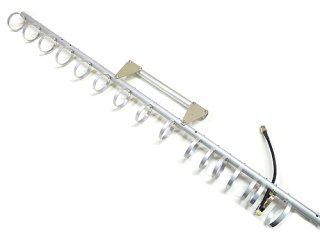 1200MHz帯 17エレメント・ループ八木アンテナ 65φクロスマウント【受注生産】【地域別送料あり】
1200MHz帯 17エレメント・ループ八木アンテナ 65φクロスマウント【受注生産】【地域別送料あり】 18,800円(税込20,680円)
18,800円(税込20,680円)
-
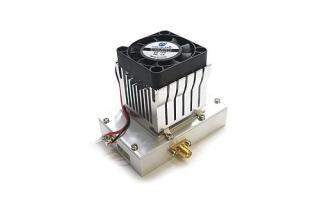 5.6GHz帯 5Wパワーアンプユニット ファン付き PW5604HF12 【受注生産】 【組込み用】
5.6GHz帯 5Wパワーアンプユニット ファン付き PW5604HF12 【受注生産】 【組込み用】 30,000円(税込33,000円)
30,000円(税込33,000円)
-
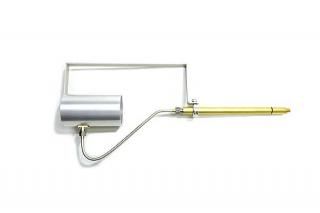 5.6GHz帯ホーンアンテナ 輻射器 金具類一式 【受注生産】
18,200円(税込20,020円)
5.6GHz帯ホーンアンテナ 輻射器 金具類一式 【受注生産】
18,200円(税込20,020円)
-
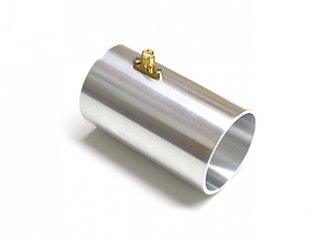 5.6GHz帯ホーン アンテナ 輻射器 【受注生産】
5.6GHz帯ホーン アンテナ 輻射器 【受注生産】 7,000円(税込7,700円)
7,000円(税込7,700円)
-
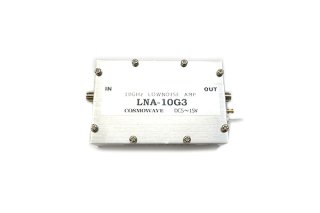 10GHz帯 ローノイズプリアンプ ユニット 【受注生産】
SOLD OUT
10GHz帯 ローノイズプリアンプ ユニット 【受注生産】
SOLD OUT
-
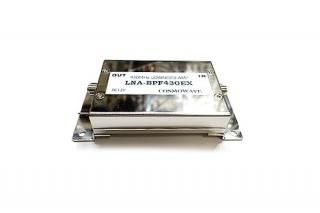 430MHzプリアンプユニット LNA-BPF430EX 【受注生産】【組込み用】
SOLD OUT
430MHzプリアンプユニット LNA-BPF430EX 【受注生産】【組込み用】
SOLD OUT
もっと見る
-
 5600MHz帯トランスバーター 完成品 IF:1.2GHz帯 外部基準10MHz対応【受注生産】
120,000円(税込132,000円)
5600MHz帯トランスバーター 完成品 IF:1.2GHz帯 外部基準10MHz対応【受注生産】
120,000円(税込132,000円)
-
 アンテナ直下型1200MHz帯プリアンプ BPF内蔵型 1.2GHz 屋外用 【受信アンプ】 【受注生産】
アンテナ直下型1200MHz帯プリアンプ BPF内蔵型 1.2GHz 屋外用 【受信アンプ】 【受注生産】 42,000円(税込46,200円)
42,000円(税込46,200円)
-
 直下型1200MHz帯リニアアンプ 屋外型 【予約販売】【受注生産】
直下型1200MHz帯リニアアンプ 屋外型 【予約販売】【受注生産】 67,000円(税込73,700円)
67,000円(税込73,700円)
-
 セミフレキ 同軸ケーブル SMAPコネクター付 10cm〜各種 屋外使用可 UT141 【受注生産】 IC-905に最適
セミフレキ 同軸ケーブル SMAPコネクター付 10cm〜各種 屋外使用可 UT141 【受注生産】 IC-905に最適 2,500円(税込2,750円)
2,500円(税込2,750円)
-
 5.6GHz帯 高ゲイン・ ホーンアンテナ 輻射器 5600MHz デュアルモード
5.6GHz帯 高ゲイン・ ホーンアンテナ 輻射器 5600MHz デュアルモード 15,000円(税込16,500円)
15,000円(税込16,500円)
-
 1200MHz帯 17エレメント・ループ八木アンテナ 65φクロスマウント【受注生産】【地域別送料あり】
1200MHz帯 17エレメント・ループ八木アンテナ 65φクロスマウント【受注生産】【地域別送料あり】 18,800円(税込20,680円)
18,800円(税込20,680円)
-
 5.6GHz帯 5Wパワーアンプユニット ファン付き PW5604HF12 【受注生産】 【組込み用】
5.6GHz帯 5Wパワーアンプユニット ファン付き PW5604HF12 【受注生産】 【組込み用】 30,000円(税込33,000円)
30,000円(税込33,000円)
-
 5.6GHz帯ホーンアンテナ 輻射器 金具類一式 【受注生産】
18,200円(税込20,020円)
5.6GHz帯ホーンアンテナ 輻射器 金具類一式 【受注生産】
18,200円(税込20,020円)
-
 5.6GHz帯ホーン アンテナ 輻射器 【受注生産】
5.6GHz帯ホーン アンテナ 輻射器 【受注生産】 7,000円(税込7,700円)
7,000円(税込7,700円)
-
 10GHz帯 ローノイズプリアンプ ユニット 【受注生産】
SOLD OUT
10GHz帯 ローノイズプリアンプ ユニット 【受注生産】
SOLD OUT
☆新着商品☆
-
 5.6GHz帯 高ゲイン・ ホーンアンテナ 輻射器 5600MHz デュアルモード
5.6GHz帯 高ゲイン・ ホーンアンテナ 輻射器 5600MHz デュアルモード 15,000円(税込16,500円)
15,000円(税込16,500円)
-
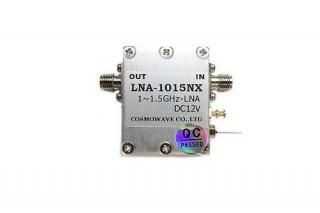 超ローノイズ 広帯域プリアンプ 1000MHz〜1500MHz LNA-1015NX 【組込み用】【受注生産】
超ローノイズ 広帯域プリアンプ 1000MHz〜1500MHz LNA-1015NX 【組込み用】【受注生産】 12,000円(税込13,200円)
12,000円(税込13,200円)
-
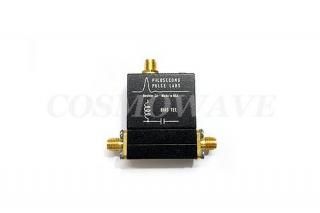 バイアスティー 10kHz〜12GHz Model:5575A Picosecond Pulse Labs テクトロニクス
バイアスティー 10kHz〜12GHz Model:5575A Picosecond Pulse Labs テクトロニクス 15,000円(税込16,500円)
15,000円(税込16,500円)
-
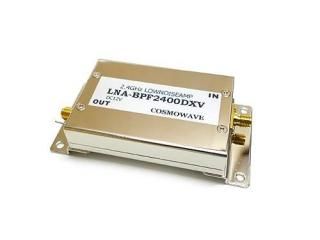 2400MHzプリアンプユニット LNA-BPF2400DXV2 LNA 【受注生産】【組込み用】
2400MHzプリアンプユニット LNA-BPF2400DXV2 LNA 【受注生産】【組込み用】 17,000円(税込18,700円)
17,000円(税込18,700円)
-
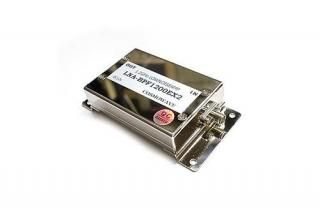 1200MHzプリアンプユニット LNA-BPF1200EX3 LNA 【受注生産】【組込み用】
1200MHzプリアンプユニット LNA-BPF1200EX3 LNA 【受注生産】【組込み用】 16,800円(税込18,480円)
16,800円(税込18,480円)
-
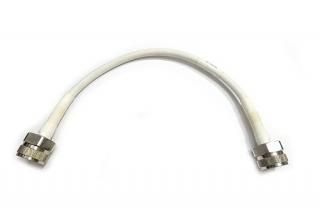 マイクロ波同軸ケーブル NPコネクター付 30cm JUNFLON MWX221 18GHz 【中古】
マイクロ波同軸ケーブル NPコネクター付 30cm JUNFLON MWX221 18GHz 【中古】  2,000円(税込2,200円)
2,000円(税込2,200円)
-
 10GHz帯ホーンアンテナ 輻射器(簡易型)【受注生産】
2,800円(税込3,080円)
10GHz帯ホーンアンテナ 輻射器(簡易型)【受注生産】
2,800円(税込3,080円)
-
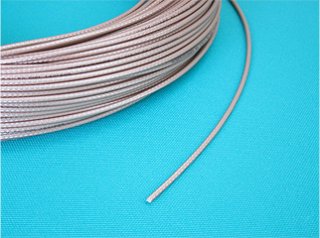 テフロン同軸ケーブル RG316/U 銀メッキ線 HUBER+SUHNER 【4m】【在庫限り】
3,600円(税込3,960円)
テフロン同軸ケーブル RG316/U 銀メッキ線 HUBER+SUHNER 【4m】【在庫限り】
3,600円(税込3,960円)
-
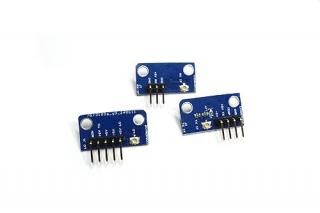 WAVELABユニット 接続基板 U.FLケーブル付き 【受注生産】
4,000円(税込4,400円)
WAVELABユニット 接続基板 U.FLケーブル付き 【受注生産】
4,000円(税込4,400円)
-
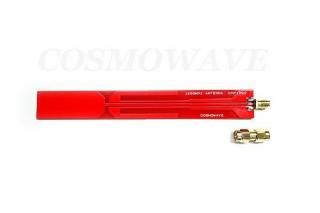 1200MHz モノバンド・アンテナ SMAP-P変換コネクター付 新型 ハンディ機に最適
1,200円(税込1,320円)
1200MHz モノバンド・アンテナ SMAP-P変換コネクター付 新型 ハンディ機に最適
1,200円(税込1,320円)
-
 ローノイズ FET pHEMT ATF-36077 Avago 12GHz NF0.5
800円(税込880円)
ローノイズ FET pHEMT ATF-36077 Avago 12GHz NF0.5
800円(税込880円)
-
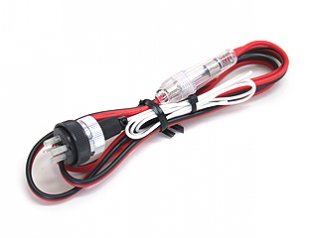 トランスバーター用電源ケーブル 4P
トランスバーター用電源ケーブル 4P  2,300円(税込2,530円)
2,300円(税込2,530円)
-
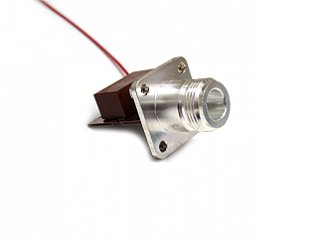 オリジナル同軸リレー RL12NJ-DC12V 10W 【受注生産品】【限定品】
3,700円(税込4,070円)
オリジナル同軸リレー RL12NJ-DC12V 10W 【受注生産品】【限定品】
3,700円(税込4,070円)
-
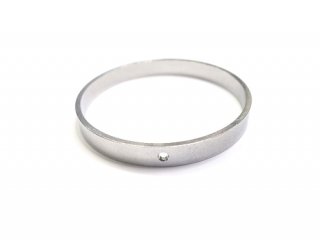 67φエレメント・1200MHzループ八木アンテナ用 幅8mm
350円(税込385円)
67φエレメント・1200MHzループ八木アンテナ用 幅8mm
350円(税込385円)
-
 高周波アンプ Narda Microwave - West RF Amplifiers 2GHz - 6GHz DMT-6032 【中古】
11,000円(税込12,100円)
高周波アンプ Narda Microwave - West RF Amplifiers 2GHz - 6GHz DMT-6032 【中古】
11,000円(税込12,100円)
-
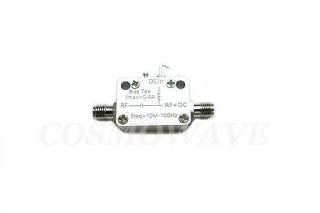 バイアスティー 10MHz〜10GHz 【新品】【取り寄せ品】
3,800円(税込4,180円)
バイアスティー 10MHz〜10GHz 【新品】【取り寄せ品】
3,800円(税込4,180円)
-
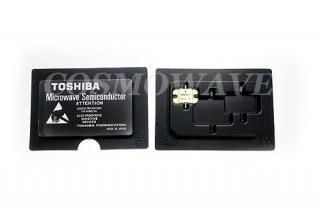 高周波増幅用 パワーアンプ用 GaAs-FET TIM8596-4 東芝 10GHz帯使用可
10,000円(税込11,000円)
高周波増幅用 パワーアンプ用 GaAs-FET TIM8596-4 東芝 10GHz帯使用可
10,000円(税込11,000円)
-
 24GHz帯ホーンアンテナ 輻射器 金具類一式 【受注生産】
18,200円(税込20,020円)
24GHz帯ホーンアンテナ 輻射器 金具類一式 【受注生産】
18,200円(税込20,020円)
-
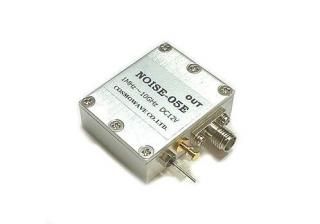 ノイズジェネレーター・ユニット NOISE-05E 受信機 プリアンプの調整に 【受注生産】
9,800円(税込10,780円)
ノイズジェネレーター・ユニット NOISE-05E 受信機 プリアンプの調整に 【受注生産】
9,800円(税込10,780円)
-
 144MHz帯プリアンプユニット LNA-BPF144C2 【組込み用】
5,800円(税込6,380円)
144MHz帯プリアンプユニット LNA-BPF144C2 【組込み用】
5,800円(税込6,380円)
-
 航空無線受信用プリアンプユニット 120MHz〜136MHz帯 新型 【組込み用】
5,800円(税込6,380円)
航空無線受信用プリアンプユニット 120MHz〜136MHz帯 新型 【組込み用】
5,800円(税込6,380円)
-
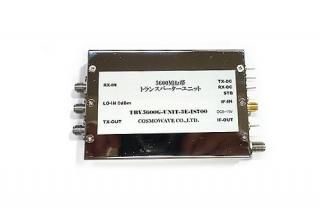 5600MHz帯トランスバーターユニット−ISDB-T用 【受注生産】【組込み用】
42,500円(税込46,750円)
5600MHz帯トランスバーターユニット−ISDB-T用 【受注生産】【組込み用】
42,500円(税込46,750円)
-
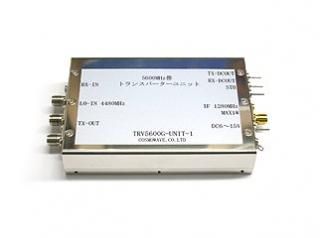 5600MHz帯トランスバーターユニット−3E 【受注生産】【組込み用】
42,000円(税込46,200円)
5600MHz帯トランスバーターユニット−3E 【受注生産】【組込み用】
42,000円(税込46,200円)
-
 5600MHz帯トランスバーター 完成品 IF:1.2GHz帯 外部基準10MHz対応【受注生産】
120,000円(税込132,000円)
5600MHz帯トランスバーター 完成品 IF:1.2GHz帯 外部基準10MHz対応【受注生産】
120,000円(税込132,000円)
-
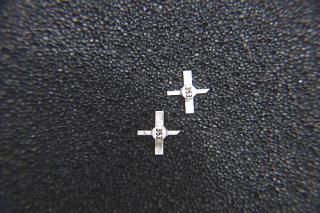 ローノイズ HEMT ATF-35376 HP 2個セット 【特価】
500円(税込550円)
ローノイズ HEMT ATF-35376 HP 2個セット 【特価】
500円(税込550円)
-
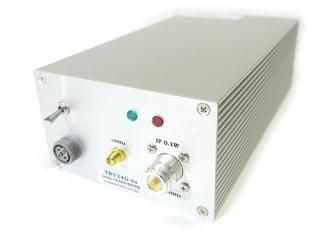 24GHz帯トランスバーター 完成品 IF:1.2GHz帯 外部基準10MHz対応 【受注生産】【限定品】
130,000円(税込143,000円)
24GHz帯トランスバーター 完成品 IF:1.2GHz帯 外部基準10MHz対応 【受注生産】【限定品】
130,000円(税込143,000円)
-
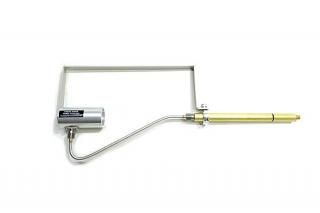 10GHz帯ホーンアンテナ 輻射器 金具類一式 【受注生産】
10GHz帯ホーンアンテナ 輻射器 金具類一式 【受注生産】 18,600円(税込20,460円)
18,600円(税込20,460円)
-
 5.6GHz帯ホーンアンテナ 輻射器 金具類一式 【受注生産】
18,200円(税込20,020円)
5.6GHz帯ホーンアンテナ 輻射器 金具類一式 【受注生産】
18,200円(税込20,020円)
-
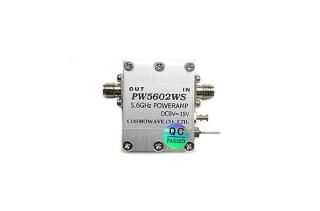 5.6GHz帯 2Wパワーアンプユニット PW5602WS 【受注生産】 【組込み用】
5.6GHz帯 2Wパワーアンプユニット PW5602WS 【受注生産】 【組込み用】 14,000円(税込15,400円)
14,000円(税込15,400円)
-
 5.6GHz帯 5Wパワーアンプユニット ファン付き PW5604HF12 【受注生産】 【組込み用】
5.6GHz帯 5Wパワーアンプユニット ファン付き PW5604HF12 【受注生産】 【組込み用】 30,000円(税込33,000円)
30,000円(税込33,000円)
-
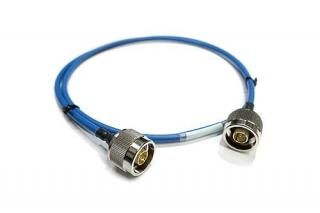 マイクロ波同軸ケーブル NPコネクター付 100cm セミフレキ FEP 18GHz【長期在庫品 新品】【数量限定】
マイクロ波同軸ケーブル NPコネクター付 100cm セミフレキ FEP 18GHz【長期在庫品 新品】【数量限定】 SOLD OUT
SOLD OUT
-
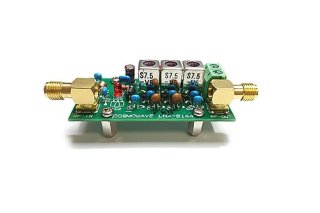 航空無線受信用プリアンプユニット 120MHz〜136MHz帯 【組込み用】
SOLD OUT
航空無線受信用プリアンプユニット 120MHz〜136MHz帯 【組込み用】
SOLD OUT
-
 430MHzプリアンプユニット LNA-BPF430EX 【受注生産】【組込み用】
SOLD OUT
430MHzプリアンプユニット LNA-BPF430EX 【受注生産】【組込み用】
SOLD OUT
もっと見る
-
 5.6GHz帯 高ゲイン・ ホーンアンテナ 輻射器 5600MHz デュアルモード
5.6GHz帯 高ゲイン・ ホーンアンテナ 輻射器 5600MHz デュアルモード 15,000円(税込16,500円)
15,000円(税込16,500円)
-
 超ローノイズ 広帯域プリアンプ 1000MHz〜1500MHz LNA-1015NX 【組込み用】【受注生産】
超ローノイズ 広帯域プリアンプ 1000MHz〜1500MHz LNA-1015NX 【組込み用】【受注生産】 12,000円(税込13,200円)
12,000円(税込13,200円)
-
 バイアスティー 10kHz〜12GHz Model:5575A Picosecond Pulse Labs テクトロニクス
バイアスティー 10kHz〜12GHz Model:5575A Picosecond Pulse Labs テクトロニクス 15,000円(税込16,500円)
15,000円(税込16,500円)
-
 2400MHzプリアンプユニット LNA-BPF2400DXV2 LNA 【受注生産】【組込み用】
2400MHzプリアンプユニット LNA-BPF2400DXV2 LNA 【受注生産】【組込み用】 17,000円(税込18,700円)
17,000円(税込18,700円)
-
 1200MHzプリアンプユニット LNA-BPF1200EX3 LNA 【受注生産】【組込み用】
1200MHzプリアンプユニット LNA-BPF1200EX3 LNA 【受注生産】【組込み用】 16,800円(税込18,480円)
16,800円(税込18,480円)
-
 マイクロ波同軸ケーブル NPコネクター付 30cm JUNFLON MWX221 18GHz 【中古】
マイクロ波同軸ケーブル NPコネクター付 30cm JUNFLON MWX221 18GHz 【中古】  2,000円(税込2,200円)
2,000円(税込2,200円)
-
 10GHz帯ホーンアンテナ 輻射器(簡易型)【受注生産】
2,800円(税込3,080円)
10GHz帯ホーンアンテナ 輻射器(簡易型)【受注生産】
2,800円(税込3,080円)
-
 テフロン同軸ケーブル RG316/U 銀メッキ線 HUBER+SUHNER 【4m】【在庫限り】
3,600円(税込3,960円)
テフロン同軸ケーブル RG316/U 銀メッキ線 HUBER+SUHNER 【4m】【在庫限り】
3,600円(税込3,960円)
-
 WAVELABユニット 接続基板 U.FLケーブル付き 【受注生産】
4,000円(税込4,400円)
WAVELABユニット 接続基板 U.FLケーブル付き 【受注生産】
4,000円(税込4,400円)
-
 1200MHz モノバンド・アンテナ SMAP-P変換コネクター付 新型 ハンディ機に最適
1,200円(税込1,320円)
1200MHz モノバンド・アンテナ SMAP-P変換コネクター付 新型 ハンディ機に最適
1,200円(税込1,320円)
返品について
- 返品期限
- 不良品については、商品到着後7日以内とさせていただきます。
お客様都合による返品は出来ませんので、ご了承ください。 - 返品送料
- 不良品については、商品到着後7日以内にご連絡ください。
お客様都合による返品は出来ませんので、ご了承ください。
不良品に該当する場合は当方で負担いたします。
修理品の送料につきましてはお客様のご負担とさせていただきます。 - 不良品
- 商品到着後、7日以内ご連絡ください。
商品に欠陥がある場合を除き、返品には応じかねますのでご了承ください。
配送・送料について
- 佐川急便 その他宅配便
-
都合により、他の宅配業者の場合も御座います。
(お客様都合で宅配業者の選択はできません)
全国一律:880円(沖縄県は1,300円)
お買い上げ合計33000円(税込)以上は、送料サービス。
※一部商品は除く、離島は除く
※土、日曜、祝日は発送できません - レターパックプラス
-
全国600円
小物で合計金額5000円以内の商品であれば、使用できます。
(サイズ:1辺5cm程度まで 代引き、日時指定は出来ません)
※土、日曜、祝日は発送できません - ポスト投函便
-
全国220円
5000円以下の小物を送れます。(基板、コネクター等)
厚さ2cm以内の品物に限ります。
ポストに投函されます。代引は出来ません。
※土、日曜、祝日は発送できません
※発送から3日〜5日程度かかります。 - 佐川急便 (日時指定できません)
-
日時指定は出来ません。
都合により、他の宅配業者の場合も御座います。
(お客様都合で宅配業者の選択はできません)
全国一律:880円(沖縄県は1,300円)
お買い上げ合計33000円(税込)以上は、送料サービス。
※一部商品は除く、離島は除く
※土、日曜、祝日は発送できません
支払い方法について
- クレジットカード
-





VISA、MasterCard、JCB、AMEX、Diners がご利用いただけます。
リボ払い、分割払いも可能です。
商品は決済確認後の手配、受注生産、発送となります。 - PayPay銀行(旧ジャパンネット銀行)
-
ご注文後7日以内にお振込みをお願いします。
商品は入金確認後の手配、受注生産、発送となります。
*振込手数料はお客様のご負担になります。
*お振込先は、翌営業日に商品確認後にご連絡します。
- ゆうちょ銀行
-
他の金融機関からゆうちょ銀行へのお振込み口座です。
ご注文後7日以内にお振込みをお願いします。
商品は入金確認後の手配、受注生産、発送となります。
*振込手数料はお客様のご負担になります。
*お振込先は、翌営業日に商品確認後にご連絡します。 - ゆうちょ振替
-
ゆうちょ銀行からゆうちょ銀行へのお振替え口座です。
ご注文後7日以内にお振込みをお願いします。
商品は入金確認後の手配、受注生産、発送となります。
*振込手数料はお客様のご負担になります。
*お振込先は、翌営業日に商品確認後にご連絡します。 - 商品代引き
-
荷物受け取りの際、商品代金と送料と手数料を併せて宅配業者の方にお支払いください。
(営業所止めでは利用できません)
受注生産品、ポスト投函便、大型商品、アンテナ類、沖縄県、離島地域は代引きできません。
詳しくはお問い合わせください。
営業日について
| 日 | 月 | 火 | 水 | 木 | 金 | 土 |
|---|---|---|---|---|---|---|
| 1 | 2 | 3 | 4 | 5 | 6 | |
| 7 | 8 | 9 | 10 | 11 | 12 | 13 |
| 14 | 15 | 16 | 17 | 18 | 19 | 20 |
| 21 | 22 | 23 | 24 | 25 | 26 | 27 |
| 28 | 29 | 30 | 31 |
| 日 | 月 | 火 | 水 | 木 | 金 | 土 |
|---|---|---|---|---|---|---|
| 1 | 2 | 3 | ||||
| 4 | 5 | 6 | 7 | 8 | 9 | 10 |
| 11 | 12 | 13 | 14 | 15 | 16 | 17 |
| 18 | 19 | 20 | 21 | 22 | 23 | 24 |
| 25 | 26 | 27 | 28 | 29 | 30 | 31 |
COSMOWAVE.co.,ltd.
株式会社コスモウェーブ
神奈川県川崎市多摩区西生田1-15-2
TEL:044-959-1126
FAX:044-959-1127
(平日:10時〜18時)
神奈川県川崎市多摩区西生田1-15-2
TEL:044-959-1126
FAX:044-959-1127
(平日:10時〜18時)
- ホーム /
- 支払い方法について /
- 配送・送料について /
- 返品について /
- 特定商取引法に基づく表記 /
- プライバシーポリシー /
- メルマガ登録・解除 /
- ショップブログ /
- RSS / ATOM
Copyright(C) 2008 COSMOWAVE Co., Ltd. All Rights Reserved.
「COSMOWAVE」「コスモウェーブ」は登録商標です
